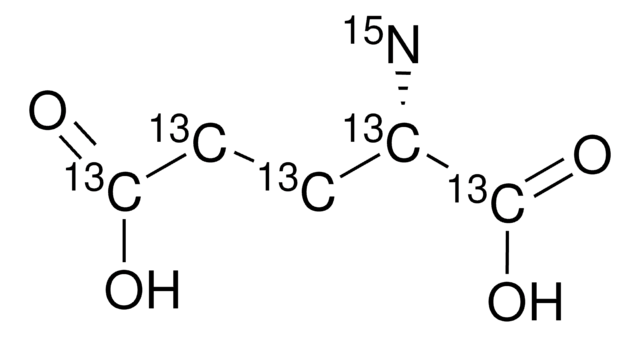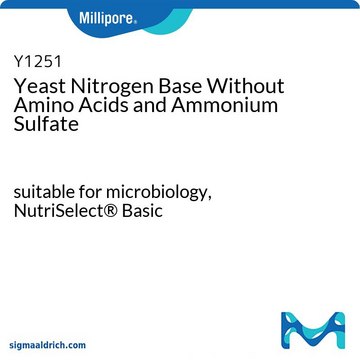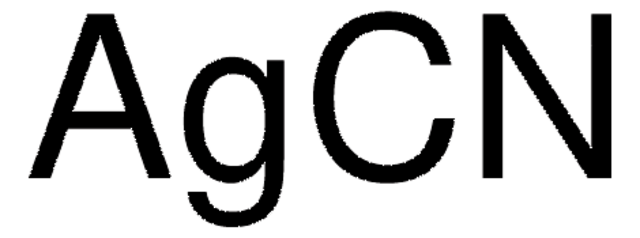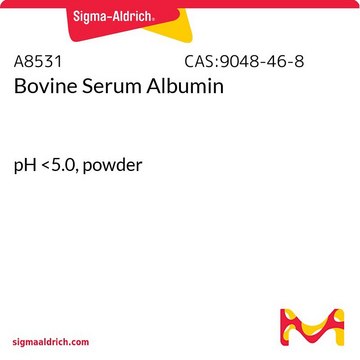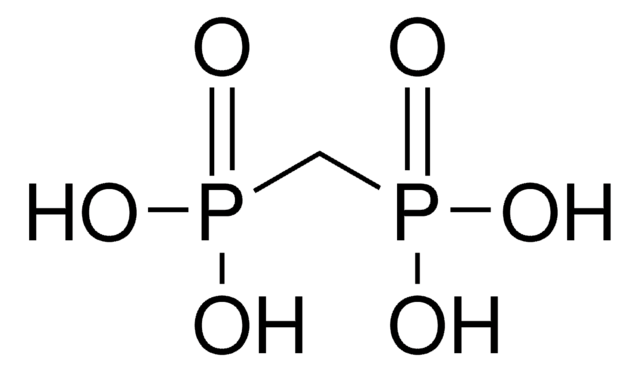All Photos(4)
About This Item
Linear Formula:
NaCN
CAS Number:
Molecular Weight:
49.01
Beilstein:
3587243
EC Number:
MDL number:
UNSPSC Code:
12352300
PubChem Substance ID:
NACRES:
NA.21
Assay:
97%
grade:
reagent grade
form:
powder, chunks or granules
Recommended Products
grade
reagent grade
Quality Level
vapor density
1.7 (vs air)
vapor pressure
1 mmHg ( 817 °C)
Assay
97%
form
powder, chunks or granules
pH
11-12 (25 °C, 49 g/L)
mp
563.7 °C (lit.)
SMILES string
[Na]C#N
InChI
1S/CN.Na/c1-2;
InChI key
RTVFYQXEHKQMKO-UHFFFAOYSA-N
Looking for similar products? Visit Product Comparison Guide
General description
Sodium cyanide is a hygroscopic salt and moderately strong base. It is soluble in water. Sodium cyanide is a strong nucleophile used to produce nitriles.
Signal Word
Danger
Hazard Statements
Precautionary Statements
Hazard Classifications
Acute Tox. 1 Dermal - Acute Tox. 1 Inhalation - Acute Tox. 1 Oral - Aquatic Acute 1 - Aquatic Chronic 1 - Met. Corr. 1 - STOT RE 1
Target Organs
Thyroid
Supplementary Hazards
Storage Class Code
6.1A - Combustible acute toxic Cat. 1 and 2 / very toxic hazardous materials
WGK
WGK 3
Choose from one of the most recent versions:
Already Own This Product?
Find documentation for the products that you have recently purchased in the Document Library.
Copper (I) Bromide-Catalyzed Carbonylative Coupling of Aryl Halides with Phenols, Alcohols and Amines using Sodium Cyanide as C1 Source: A Synthesis of Carboxylic Acid Derivatives.
Prasad PK and Sudalai A.
Advanced Synthesis & Catalysis, 356(10), 2231-2238 (2014)
Victor M Victor et al.
The Journal of clinical endocrinology and metabolism, 96(10), 3115-3122 (2011-07-23)
Insulin resistance is a feature of polycystic ovary syndrome (PCOS) and is related to mitochondrial and endothelial function. We tested whether hyperandrogenic insulin-resistant women with PCOS, who have an increased risk of vascular disease, display impaired leukocyte-endothelium interactions, and mitochondrial
Heterogeneously Catalyzed Oxidative Cyanation of Tertiary Amines with Sodium Cyanide/Hydrogen Peroxide using Polymer-Supported Iron (II) Phthalocyanines as Catalyst.
Singhal S, et al.
Advanced Synthesis & Catalysis, 352(8), 1338-1344 (2010)
Helen W Kreuzer et al.
Journal of forensic sciences, 57(1), 75-79 (2011-11-02)
Sodium and potassium cyanide are highly toxic, produced in large amounts by the chemical industry, and linked to numerous high-profile crimes. The U.S. Centers for Disease Control and Prevention has identified cyanide as one of the most probable agents to
Asymmetric cyanohydrin formation from aldehydes catalyzed by manganese Schiff base complexes.
Qu Y, et al.
Tetrahedron Asymmetry, 21(2), 187-190 (2010)
Our team of scientists has experience in all areas of research including Life Science, Material Science, Chemical Synthesis, Chromatography, Analytical and many others.
Contact Technical Service
